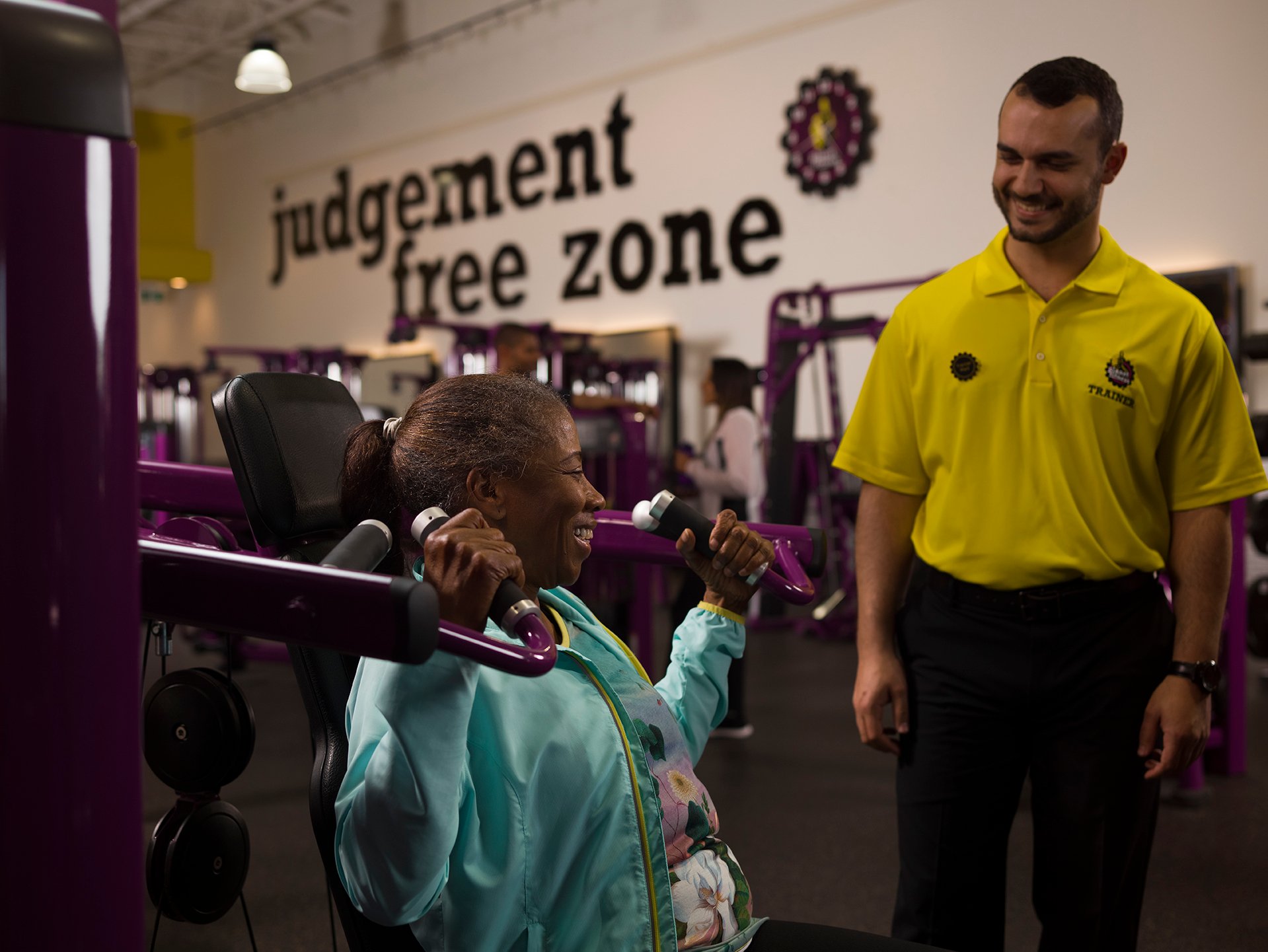

Featured
Why Is Muscular Endurance Important
Modified: October 24, 2023
Discover the significance of muscular endurance in achieving your fitness goals. Learn how to improve your endurance through featured workouts and exercises.
Introduction
Muscular endurance is a crucial component of physical fitness that often goes overlooked. While many people focus on achieving muscular strength and aesthetics, the ability of our muscles to endure prolonged exertion is just as important. Muscular endurance refers to the ability of a muscle or group of muscles to sustain repeated contractions over an extended period of time. This endurance is what allows us to engage in activities such as running, swimming, cycling, or even carrying heavy objects without experiencing fatigue too quickly.
Strong muscular endurance not only improves our performance in physical activities but also enhances our overall quality of life. Whether we are engaging in daily tasks or more intense athletic endeavors, having well-developed muscular endurance can make a significant difference. In this article, we will explore the definition of muscular endurance, its benefits, and its importance in our daily lives.
So what exactly is muscular endurance? In essence, it involves the ability of our muscles to keep contracting for an extended period of time without becoming exhausted. When our muscles have developed good endurance, they can continue to work efficiently even as they are subjected to repetitive movements or long-duration activities. This endurance is attributed to the slow-twitch muscle fibers in our muscles, which are responsible for providing sustained contractions over a prolonged period of time.
Definition of Muscular Endurance
Muscular endurance is a fitness component that refers to the ability of a muscle or group of muscles to repeatedly exert force or sustain contractions over an extended period of time. It is a measure of how well the muscles can perform repetitive tasks without experiencing fatigue or losing strength. Unlike muscular strength, which focuses on the maximum force a muscle can generate in a single contraction, muscular endurance emphasizes the ability to endure prolonged exertion.
There are two main types of muscular endurance: static and dynamic. Static endurance involves holding a position or maintaining a contraction without movement, such as holding a plank or a wall sit. This form of endurance primarily targets the isometric contractions of the muscles, where the length of the muscle remains constant. Dynamic endurance, on the other hand, involves repetitive contractions with movement. Activities such as running, cycling, or swimming require dynamic muscular endurance as they involve continuous muscle contractions over an extended period of time.
One way to assess muscular endurance is through the use of exercises such as push-ups, sit-ups, or squats, where the individual performs as many repetitions as possible until fatigue sets in. The number of repetitions achieved before fatigue is a measure of the individual’s muscular endurance. While muscular endurance is important for athletes and those involved in sports, it is equally important for individuals looking to improve their overall fitness.
Improving muscular endurance involves progressive overload, where the intensity or duration of the exercise is gradually increased over time. This progressive approach challenges the muscles, forcing them to adapt and improve their endurance capacity. Additionally, incorporating a variety of exercises that target different muscle groups helps to develop overall muscular endurance throughout the body.
Overall, muscular endurance is a critical component of physical fitness. It allows individuals to perform various activities with ease, sustain prolonged efforts, and reduces the risk of injuries related to muscular fatigue. By incorporating exercises that specifically target muscular endurance into our fitness routines, we can enhance our overall performance and improve our overall quality of life.
Benefits of Muscular Endurance
Muscular endurance holds numerous benefits for individuals of all fitness levels and ages. Beyond improving physical performance, it has a positive impact on overall health and well-being. Let’s explore the key benefits of developing and maintaining muscular endurance:
- Enhanced Stamina: Muscular endurance allows you to engage in activities that require prolonged effort, such as long-distance running, cycling, or hiking. With improved endurance, you’ll be able to sustain these activities for longer durations without feeling overly fatigued.
- Increased Strength: Muscular endurance training leads to increased muscle fiber recruitment and activation, which ultimately enhances overall strength. As your muscles become better equipped to handle repetitive contractions, you’ll notice improved strength in various physical tasks.
- Improved Body Composition: Engaging in muscular endurance exercises can contribute to a healthier body composition. As you build lean muscle mass, your body’s metabolism increases, leading to improved fat burning and weight management.
- Enhanced Cardiovascular Health: Regular muscular endurance training helps to improve cardiovascular health by increasing heart rate and promoting efficient oxygen delivery to the muscles. This leads to a stronger heart and improved overall cardiovascular fitness.
- Reduced Risk of Injury: Muscular endurance training strengthens both muscles and connective tissues, providing better support and stability to joints. This reduces the risk of injuries during physical activities and everyday tasks.
- Improved Posture and Balance: Muscular endurance exercises target the core muscles, which play a vital role in maintaining proper posture and balance. By improving core strength and endurance, you can avoid back pain and maintain a more aligned and stable posture.
- Boosted Mental Resilience: Building muscular endurance requires mental focus and discipline. The perseverance and mental strength developed through endurance training can translate into other areas of life, improving overall mental resilience and determination.
These benefits highlight the importance of incorporating activities that improve muscular endurance into your fitness routine. Whether you’re an athlete looking to enhance performance or simply aiming to improve your overall health, developing muscular endurance will undoubtedly have a positive impact on your physical and mental well-being.
Importance of Muscular Endurance in Daily Life
Muscular endurance plays a vital role in our daily lives, impacting our ability to perform tasks efficiently and maintain an active lifestyle. Here are some key reasons why muscular endurance is important in our day-to-day activities:
- Functional Movements: Muscular endurance is essential for carrying out everyday activities such as lifting heavy objects, pushing a cart, or even climbing stairs. By improving muscular endurance, you’ll be able to complete these tasks with less effort and reduced risk of fatigue or injury.
- Task Efficiency: Tasks that require repetitive motions, like cleaning, gardening, or cooking, can be performed more efficiently when you have good muscular endurance. The ability to sustain contractions without fatigue allows you to accomplish these tasks without feeling overly tired or experiencing muscular strain.
- Improved Energy Levels: Developing muscular endurance leads to improved energy levels throughout the day. With enhanced stamina, you’ll experience less fatigue during physical tasks, allowing you to maintain productivity and engagement in various activities throughout the day.
- Enhanced Posture and Alignment: Muscular endurance exercises, especially those targeting the core muscles, help improve posture and alignment. Good posture not only enhances your appearance but also reduces the risk of back pain and musculoskeletal imbalances.
- Reduced Daily Fatigue: Having adequate muscular endurance reduces the feeling of fatigue after long periods of standing or sitting. Muscles that are capable of sustaining contractions for extended periods can support the body efficiently, reducing the strain and discomfort experienced during sedentary activities.
- Increased Active Lifestyle: Muscular endurance enables you to participate in various physical activities and sports without feeling exhausted too quickly. Whether it’s playing with your kids, going for a hike, or participating in recreational sports, having good muscular endurance allows you to enjoy a more active and fulfilling lifestyle.
Considering the demands of daily life, having well-developed muscular endurance is essential for performing tasks efficiently and maintaining a high quality of life. By incorporating exercises that target muscular endurance into your fitness routine, you can improve your ability to handle everyday activities and enhance your overall well-being.
Muscular Endurance vs. Muscular Strength
While muscular endurance and muscular strength are related, they represent distinct aspects of physical fitness. Understanding the difference between the two is important for developing a well-rounded training program. Let’s take a closer look at how muscular endurance differs from muscular strength:
Muscular Endurance: Muscular endurance refers to the ability of a muscle or group of muscles to sustain repeated contractions or maintain a contraction over an extended period of time. It is measured by how long the muscles can perform without experiencing fatigue or loss of strength. Muscular endurance is crucial for activities that require endurance, such as running long distances or performing high repetitions of exercises like push-ups or sit-ups.
Muscular Strength: On the other hand, muscular strength refers to the maximum amount of force a muscle or group of muscles can produce in a single contraction. It is a measure of raw power and is commonly assessed through exercises like one-rep max lifts or other tests that assess the maximum weight a person can lift for a specific exercise. Muscular strength is essential for tasks that require a high level of force, such as lifting heavy objects or performing explosive movements like sprinting or lifting weights.
The primary difference between muscular endurance and muscular strength lies in the intensity and duration of the contractions. Muscular endurance focuses on the ability to perform repeated or sustained contractions over an extended period, while muscular strength emphasizes the maximum force a muscle can generate in a short period.
It is important to note that both muscular endurance and muscular strength have their places in overall fitness. Depending on your goals, you may choose to prioritize one over the other. For example, endurance athletes may focus more on developing muscular endurance to improve their performance, while strength athletes may prioritize building muscle strength to enhance their power and explosive capabilities.
While there is some overlap between the two, it’s important to train specifically for the desired outcome. Incorporating a combination of exercises that target both muscular endurance and muscular strength can help you develop a well-rounded physique and improve overall physical performance.
How to Improve Muscular Endurance
Improving muscular endurance requires a systematic approach that focuses on progressively challenging the muscles and gradually increasing the duration and intensity of the exercises. Here are some key strategies to enhance your muscular endurance:
- Incorporate High-Repetition Exercises: Perform exercises that target specific muscle groups and involve high repetitions. This can include exercises like bodyweight squats, lunges, push-ups, and sit-ups. Start with a comfortable number of repetitions and gradually increase the number over time.
- Circuit Training: Engage in circuit training routines that involve performing a series of exercises one after another, targeting different muscle groups. This helps to improve overall endurance and stamina as you move from one exercise to the next with minimal rest.
- Interval Training: Incorporate interval training into your workouts. This involves alternating periods of high-intensity exercise with periods of active recovery or lower intensity. For example, you could perform 30 seconds of high-intensity squat jumps followed by 30 seconds of marching in place. Repeat this cycle for several rounds.
- Gradually Increase Intensity and Duration: Increase the intensity or duration of your workouts gradually over time. This progressive overload stimulates muscle adaptation and improves endurance. For example, if you’re running, increase either the distance or the speed of your runs as you progress.
- Mix Up Your Training: Keep your workouts varied by incorporating different exercises and training methods. This helps prevent boredom, challenges your muscles in different ways, and promotes overall muscular development and endurance.
- Focus on Compound Exercises: Compound exercises that engage multiple muscle groups simultaneously are particularly effective in improving muscular endurance. Examples include squats, lunges, deadlifts, and bench presses.
- Breathe Properly: Pay attention to your breathing during exercises. Proper breathing techniques supply oxygen to the muscles, allowing them to work more efficiently and endure longer. Breathe in deeply through your nose and exhale fully through your mouth.
- Rest and Recover: Allow your muscles adequate time to rest and recover between workouts to avoid overuse injuries. Aim for at least one to two days of rest per week and incorporate light active recovery activities such as walking or yoga into your routine.
Consistency and patience are key when it comes to improving muscular endurance. It takes time for the muscles to adapt and become more efficient at sustaining contractions. Incorporate these strategies into your training regimen and gradually increase the intensity and duration of your workouts to steadily improve your muscular endurance.
Common Myths about Muscular Endurance
When it comes to muscular endurance, there are several common myths and misconceptions that can hinder our understanding and progress. Let’s debunk these myths and set the record straight:
- Myth 1: Muscular Endurance Makes You Bulky: One prevalent myth is that training for muscular endurance will make you bulky. In reality, muscular endurance exercises primarily target the slow-twitch muscle fibers, which do not significantly contribute to muscle hypertrophy or bulkiness. Instead, muscular endurance workouts promote lean muscle development and a toned appearance.
- Myth 2: Higher Repetitions Always Lead to More Endurance: While higher repetitions are often associated with muscular endurance training, it is not the only factor to consider. The intensity and difficulty of the exercises also play a crucial role. It is essential to focus on challenging the muscles with progressively difficult exercises to improve endurance effectively.
- Myth 3: Endurance Training Only Applies to Athletes: Contrary to popular belief, muscular endurance training is not limited to athletes or individuals pursuing competitive sports. It is beneficial for individuals of all fitness levels and ages looking to enhance their overall fitness, strength, and stamina for everyday activities.
- Myth 4: Muscular Endurance is Only for Cardiovascular Endurance Activities: While activities like running or cycling require muscular endurance, it is not limited to cardiovascular exercises. Muscular endurance is equally important for strength training, functional movements, and maintaining proper posture and alignment.
- Myth 5: Muscular Endurance Training is Repetitive and Boring: Some people may associate endurance training with repetitive and monotonous workouts. However, there are numerous ways to incorporate variety and keep workouts engaging. You can experiment with different exercises, training methods, and intensity levels to keep your routine interesting and challenging.
- Myth 6: Muscular Endurance Cannot Be Improved: Some individuals believe that muscular endurance is fixed and cannot be improved beyond a certain point. However, with proper training and progression, muscular endurance can be significantly enhanced. It is a trainable aspect of fitness that improves with consistent effort and dedication.
It is important to dispel these myths and misconceptions surrounding muscular endurance to encourage individuals to incorporate endurance training into their fitness routines. By understanding the true benefits and potential of muscular endurance, we can maximize our training efforts and achieve optimal strength, stamina, and overall physical fitness.
Conclusion
Muscular endurance is a critical component of physical fitness that should not be overlooked. It refers to the ability of our muscles to sustain repeated contractions or maintain contractions over an extended period of time. Developing and improving muscular endurance has numerous benefits, including enhanced stamina, increased strength, improved body composition, and reduced risk of injury. It also plays a crucial role in our daily lives, allowing us to perform tasks efficiently, maintain good posture, and enjoy an active lifestyle.
It’s important to differentiate muscular endurance from muscular strength. While both are essential, endurance focuses on the ability to endure prolonged exertion, while strength emphasizes maximum force in a single contraction. By incorporating strategies such as high-repetition exercises, circuit training, interval training, and gradually increasing intensity and duration into our workouts, we can effectively improve muscular endurance.
It’s important to debunk common myths surrounding muscular endurance, such as the fear of bulking up or the misconception that endurance training is only for athletes. Muscular endurance is beneficial for individuals of all fitness levels and ages. With dedication, consistency, and a varied training routine, we can improve our endurance and enjoy the benefits in our daily lives.
So, whether you’re an athlete striving for peak performance or someone looking to improve overall fitness, don’t neglect the importance of muscular endurance. By incorporating specific exercises and training methods, you can enhance your stamina, strength, and overall physical well-being. Embrace the challenge, stay consistent, and reap the rewards of a well-developed and enduring muscular system.








